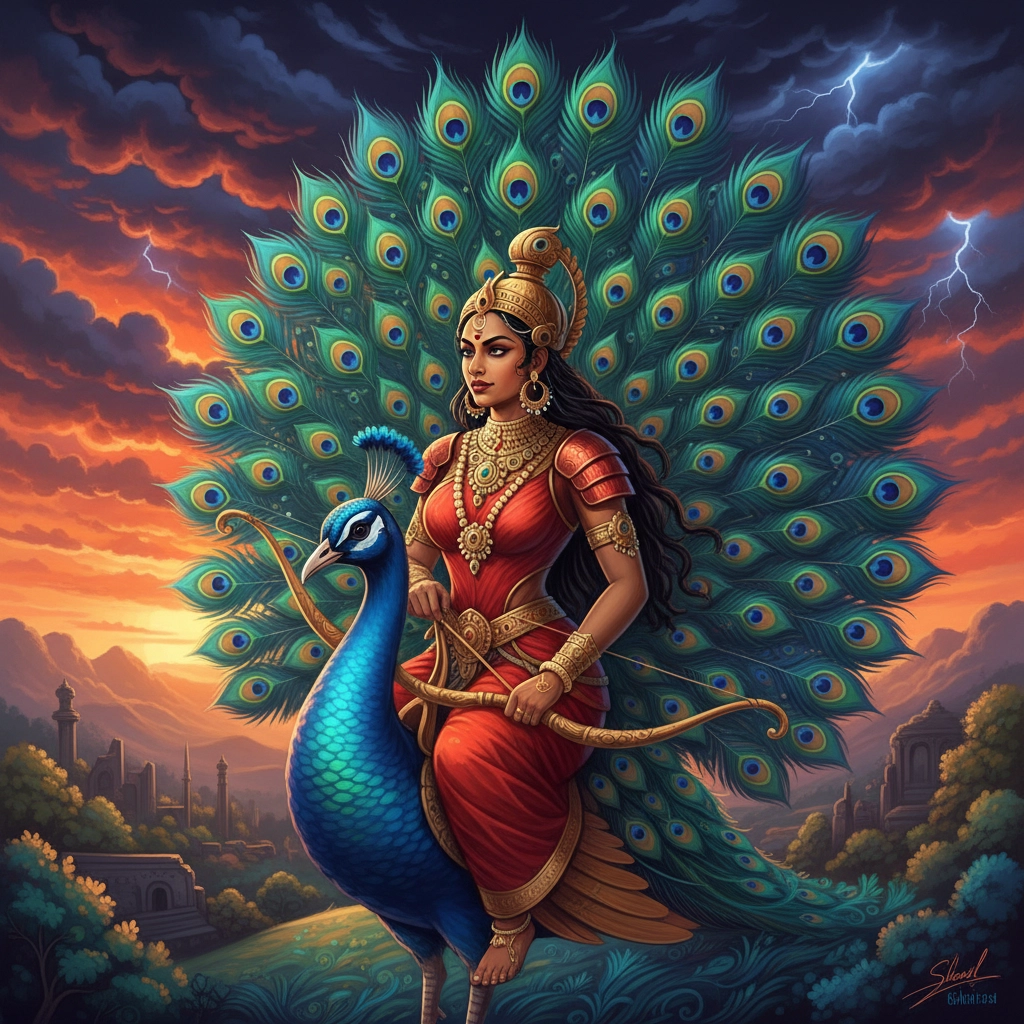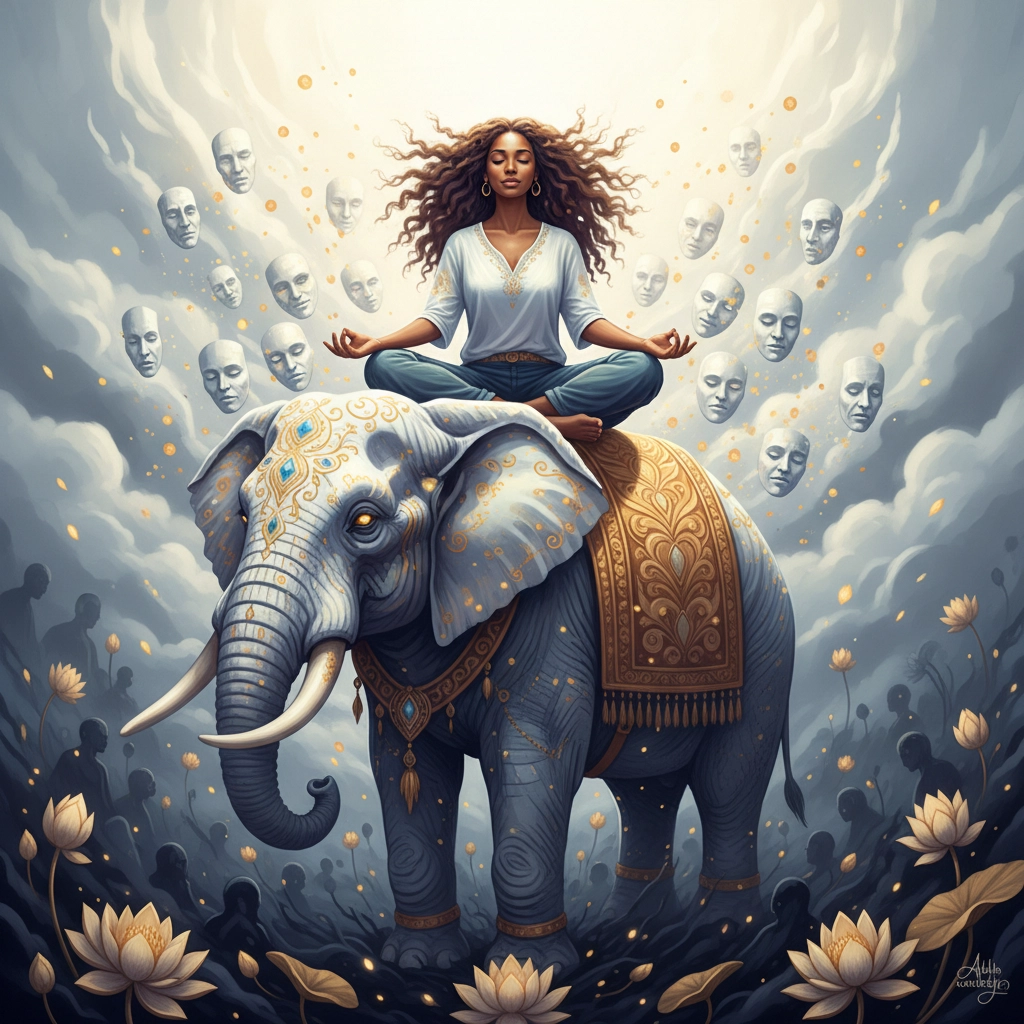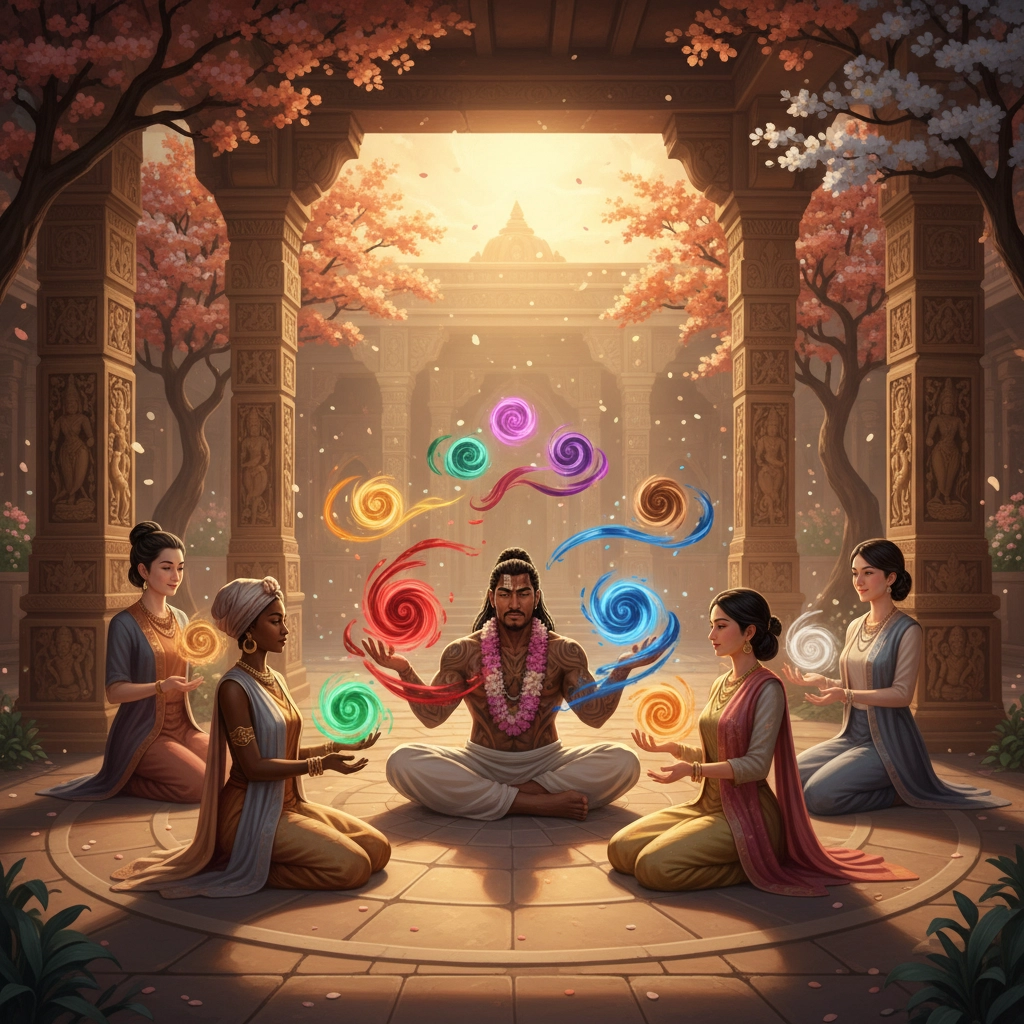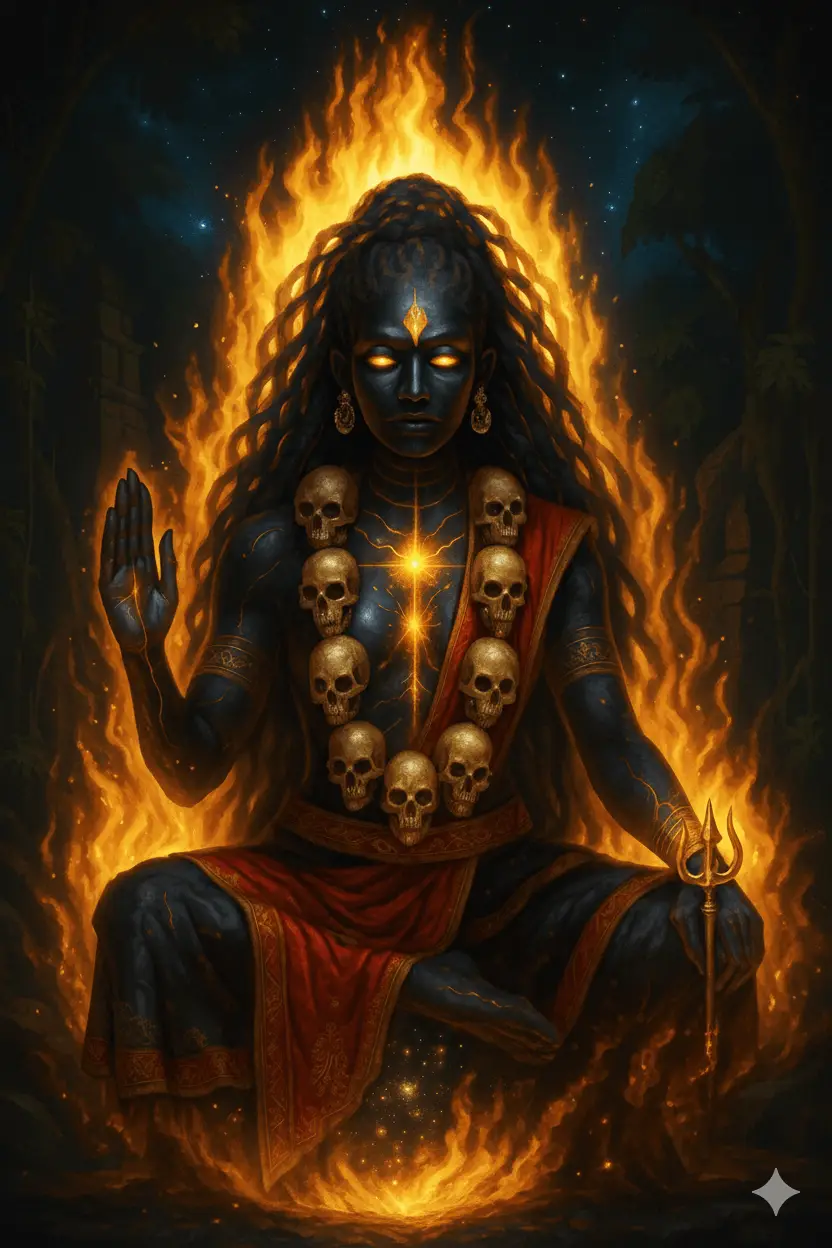When most people hear "Bhairava," they picture a terrifying deity with bulging eyes, sharp fangs, and weapons of destruction. While that imagery isn't wrong, it's incomplete. Bhairava represents something far more profound than fear: he's the aspect of Shiva that destroys ignorance and liberates us from the illusion of separation.
The eight forms of Bhairava, known as Ashta Bhairava, aren't just scary gods meant to intimidate. They're sophisticated spiritual technologies, each designed to help practitioners break through specific mental barriers and reach higher states of consciousness. Think of them as eight different keys, each unlocking a different door on your spiritual journey.
The Cosmic Security System

The Ashta Bhairavas function like a cosmic security system, with each form guarding one of the eight cardinal and intercardinal directions. This isn't just symbolic: in tantric cosmology, these directions represent different aspects of consciousness and reality. By working with all eight forms, practitioners create a complete energetic protection around themselves while systematically addressing every aspect of their spiritual development.
Each Bhairava also commands eight subordinate Bhairavas, creating a network of 64 protective forces. This creates layers of support for serious practitioners, but also shows how comprehensive this system really is.
Meet the Eight Guardians
Asitāṅga Bhairava (East)
The eastern guardian appears with white skin and four arms, riding a swan. He carries prayer beads, a water pot, sword, and skull cup. Connected to Jupiter and creativity, Asitāṅga helps remove curses and blocks to artistic expression. His consort Brahmani links him to the creative force of the universe.
If you're struggling with creative blocks or feel cursed in some way, this is your go-to Bhairava. The swan represents the ability to separate milk from water: or truth from illusion.
Ruru Bhairava (Southeast)
Light blue and riding a bull, Ruru carries a deer, axe, sword, and bowl. Associated with Venus, he's all about prosperity and wealth: not just material, but the wealth of knowledge and wisdom. His consort Maheshvari emphasizes his connection to royal favor and abundance.
This form is perfect for those seeking material stability or recognition for their work. The bull symbolizes strength and determination in pursuing goals.
Caṇḍa Bhairava (South)

White-complexioned and riding a peacock, Caṇḍa wields bow, arrow, sword, and bowl. Connected to Mars and the sun deity Surya, he's the warrior who protects through courage and decisive action. His consort Kaumari links him to the fierce protective mother energy.
When you need courage to face life's battles or protection from negative forces, Caṇḍa is your ally. The peacock symbolizes the transformation of poison (negative energy) into beauty.
Krodha Bhairava (Southwest)
Dark blue and mounted on an eagle, Krodha carries conch, discus, mace, and bowl. Associated with Saturn, he represents righteous anger: the fury that destroys obstacles and injustice. His consort Vaishnavi connects him to the preserving aspect of divinity.
This isn't about losing your temper. Krodha teaches controlled, purposeful anger that can move mountains and create necessary change. The eagle represents the ability to see the big picture from above.
Unmatta Bhairava (West)
Golden-skinned and riding a horse, Unmatta holds sword, skull cup, pestle, and shield. Connected to Mercury, his name means "intoxicated": but this is divine intoxication, the ecstasy of spiritual realization. His consort Varahi links him to the power of spiritual sovereignty.
When meditation feels dry or you've lost the joy in your practice, Unmatta can help you rediscover the bliss of spiritual connection. The horse symbolizes the controlled mind moving swiftly toward enlightenment.
Kapāla Bhairava (Northwest)

Shining yellow and mounted on an elephant, Kapāla carries thunderbolt, noose, sword, and bowl. Associated with the Moon, his name refers to the skull: symbolizing the death of ego and false identity. His consort Indrani connects him to celestial power.
This form helps practitioners move beyond personal identity and recognize their true nature. The elephant represents memory and wisdom, helping us remember our divine essence.
Bhīṣaṇa Bhairava (North)
Blood-red and riding a corpse, Bhīṣaṇa wields sword, skull cup, trident, and pestle. Associated with Ketu, he's the most terrifying form: and for good reason. He forces us to confront death and impermanence directly. His consort Chamunda embodies the fierce goddess who destroys obstacles.
Don't run from this one. Bhīṣaṇa offers the ultimate teaching: when you truly understand death, you stop fearing life. The corpse mount represents the death of all illusions.
Saṃhāra Bhairava (Northeast)
Lightning-yellow-orange with ten arms, riding a lion, Saṃhāra is the most visually impressive. He carries trident, drum, conch, mace, discus, sword, bowl, skull-topped staff, noose, and goad. Associated with Rahu, he represents cosmic dissolution: not destruction, but transformation. His consort Narasimhi connects him to fierce protection that preserves dharma.
This form helps practitioners understand that endings are beginnings. The lion represents fearless spiritual authority and the power to rule over your inner kingdom.
The Real Message Behind the Terror

Here's what most people miss: the terrifying appearance isn't meant to scare you away: it's meant to scare away your ego, your attachments, and your illusions. Each weapon represents a tool for cutting through mental bonds. Each fierce expression targets a specific fear or limitation.
The three eyes that appear on many Bhairava forms contain images of the sun, moon, and divine feminine principle. This represents complete perception: seeing past, present, and future simultaneously. The bulging eyes aren't angry; they're wide open with the shock of ultimate realization.
Even the mounts tell stories. From swan to corpse, each vehicle represents a different stage of consciousness. The swan can separate milk from water (truth from illusion). The bull represents determined strength. The corpse shows that enlightenment comes through the death of everything false.
Working with the Ashta Bhairava
You don't need to worship all eight forms equally. Different life situations call for different Bhairava energies. Facing a creative block? Work with Asitāṅga. Need courage for a difficult conversation? Call on Caṇḍa. Ready to face your deepest fears? Bhīṣaṇa is waiting.
The beauty of this system is its completeness. By the time you've worked with all eight forms, you've addressed every major area of spiritual development: creativity, prosperity, courage, righteous action, divine joy, ego dissolution, death acceptance, and transformation mastery.
Beyond Fear to Freedom
The Ashta Bhairava ultimately teach us that divine terror serves love. They terrify us out of our small, limited self-concepts and into the vast, limitless awareness that is our true nature. They're not here to punish: they're here to liberate.
When you stop seeing them as frightening deities and start recognizing them as aspects of your own awakened consciousness, everything changes. The fierce expressions become expressions of your own fierce commitment to truth. The weapons become your own tools for cutting through confusion.
That's when you realize Bhairava was never separate from you at all. The eight forms are eight faces of your own awakened nature, eight ways your consciousness protects, guides, and transforms itself on the journey home to truth.
The mask isn't fearsome: it's fierce with love. And once you see that, you'll never be afraid of your own power again.



